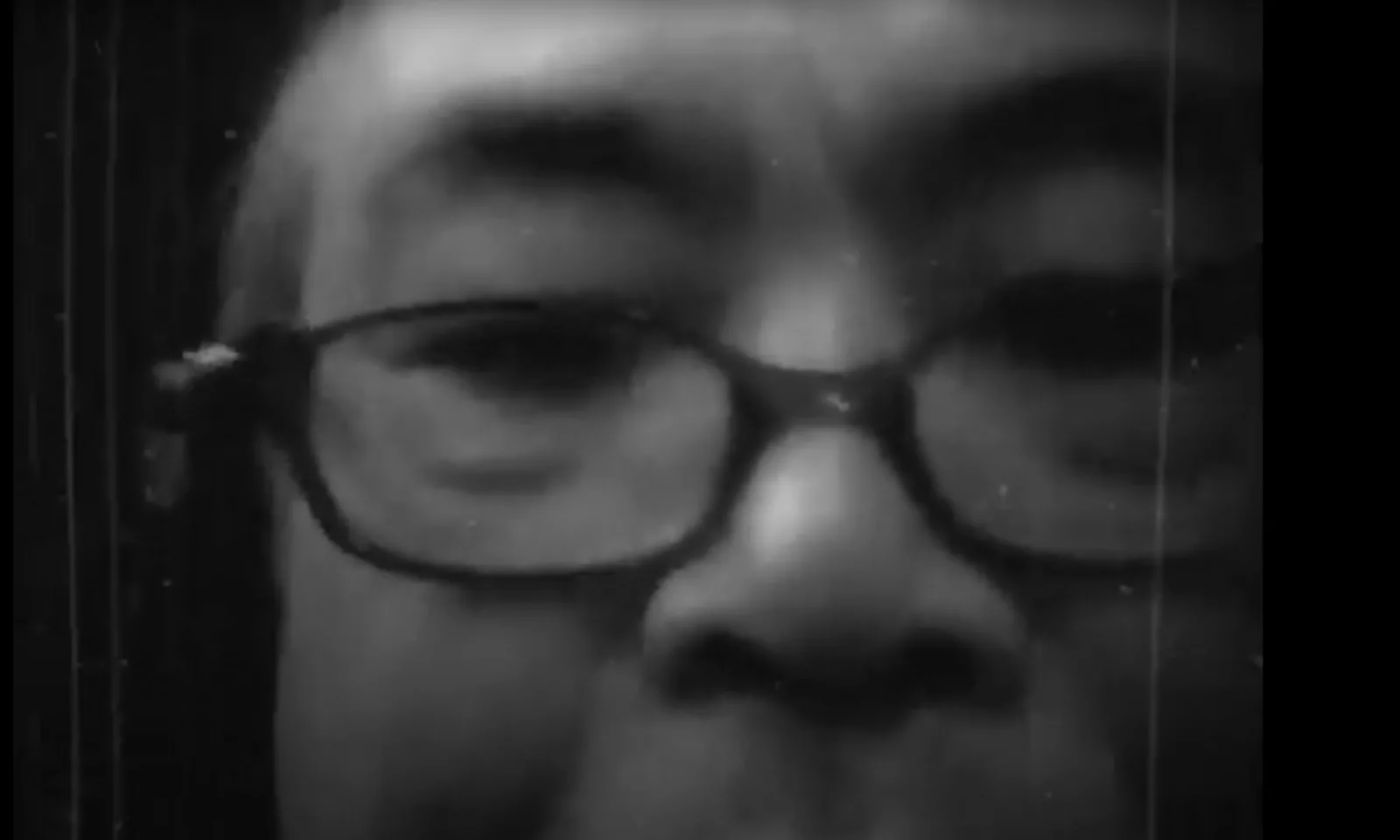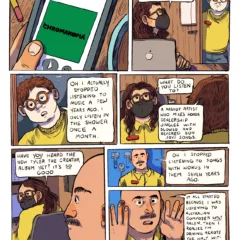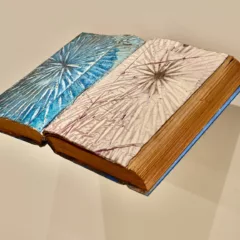
TOSHI MAKIHARA
BECOMING THE SOUND
A selection of miniature videos originally intended for Instagram
curated by Victor Vieira-Branco
9/6 – 10/13/24
Presented in the Black Box Gallery, Vox Populi
We become an audience to this work without first knowing it. While approaching the room we are at first the listener. We hear rustling, pinging, clanging, folding, slamming, crumpling, rolling, scratching, wheeling, crashing, banging, and – pause before pushing through into the dark room ahead. It sounds as if a wild impish thing is destroying the gallery in a mad rhythm. And we are brought into the room, invited into the rich mayhem.
Toshi Makihara is a drummer, percussionist, and sound performer. Percussion is a delightful word, in which pronouncing the syllables feels like the meaning. Per – a sound sharp and round is a prefix that means through, cuss – a hissing cymbal on the tongue, and sion – a crashing halt in the meter, a suffix that means the act of or result of. The expectant meaning of the word being “the beating or striking of a musical instrument.” That definition can work here, but I think a far better variant is “the act or technique of tapping the surface of a body to learn the condition of the parts beneath the resultant sound.”
In “Becoming the Sound,” Makihara plays metal carts, mops, hangers, a meat tenderizer, a drum (once), as well as several objects made unrecognizable in his use of them. A gorgeous and suspenseful piece is coaxed from a large metal frame on wheels, that might be recognized as a finger-pinching device used to store metal folding chairs. This video has the depth and suspenseful timing of a horror film, Markihara forming abstract ringing, a theatrically creaking door, and a bare scraping from the object. We (the viewer and Makihara) are learning the condition of the parts beneath the resultant sound. Some sounds are innate to the tools and the use of them. Chopping and tenderizing meat, rolling a cart, and taking apart a box, produce a certain sound. But some ideas expressed are extraordinary and odd, for example, playing the short metal rungs on a refrigerator shelf like a dull harp, or the strange cymbal-like performance of plastic hammers that Makihara does inexplicably in a green beret and false white mustache.
The performance equals the importance of the sound itself – the variable moods of playing for instance… the wild abandon of playing in a cleaning closet and slamming mop handles into the walls versus the tense caution and patience of playing the tender chair cart. It also makes clear the impressive technical ability of the artist. He plays each instrument in its own way. Just as there are certain logics to the playing of a trombone versus a guitar, a meat tenderizer and a cardboard box also engender different methodologies.
At first, the sound seems the central focus, over the softly grainy projected cellphone videos. But the visual information becomes very important – the environs and the strange tools answer and delay questions – a strange bell-like sound is conjured from the sharp blows of his fingers on a scratched metal cart, as well as an overwhelming crashing waterfall crescendo (from the same cart) being rolled down the hall with passing stripes of fluorescents drawn through the scratched surface. The scenes are often portraits of institutional lighting, and architecture of utilitarian tools as spaces, as well as the sound created within and by them.
The videos are charged with the tension of incidental framing and the live finding of percussive items. In one he is in some sort of cleaning closet, we see him exuberantly shuffling something off-screen which sounds like a cardboard box, and watch as he also adds the water from the sink and smacks the mop handle into the wall. We are invited in again to glance around the small room inside the video, picking up things for him to try, to learn the sound of.
Makihara seems aware that the videos are a portrait of himself, not just his tools and environments and what he can do with them. There is only one video where he is not making sound himself but instead recording ambient sound. A black and white close frame of his face walking through what seems like a train station where music is echoing. He is an incredibly engaging performer, playful and unpredictable. In certain videos, he appears completely focused on scratching and clanging, and then he looks up at the viewer in excitement. Can you believe I just did that?
These are a series of experiments strung together by that fact of percussion. It is a beautiful tumble down a glorious hole, where anything becomes possible. Although many of these are everyday materials – don’t be fooled – Makihara is extremely talented and practiced at finding music in hidden places.
A note on sound: if you do not enjoy unpredictable and sometimes loud sound, this may not be the exhibit for you. As noted above you can stand in the hallway or doorway in front of the Black Box space and still hear it well, in a way that may be less overwhelming.









